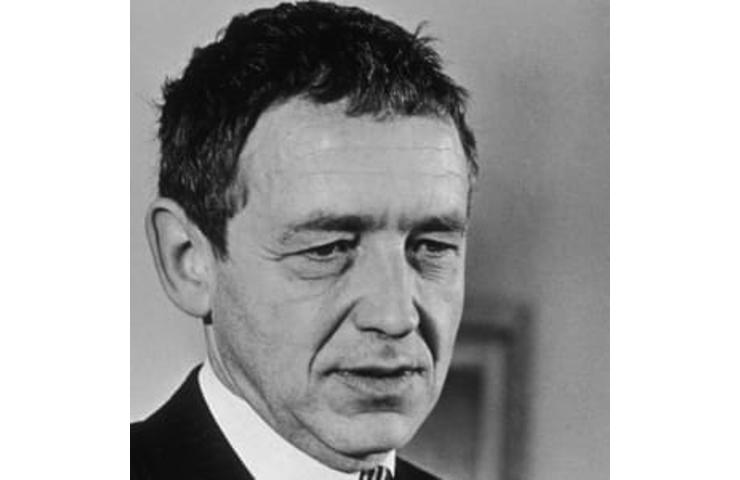No products in the cart.

Painter (1917–2009)
Andrew Wyeth, son of N.C. Wyeth, was a 20th century painter known for his realism in portraiture and pastorals, as seen in the iconic “Christina’s World.”
Synopsis
Born on July 12, 1917, in Chadds Ford, Pennsylvania, Andrew Wyeth received tutelage from his artist father and garnered fame for his own works, taking to egg tempera techniques. He became an internationally exhibited, award-winning artist with pieces like “Christina’s World,” “A Crow Flew By” and “The Clearing,” as well as the portrait series “The Helga Pictures.” Wyeth died in Chadds Ford on January 16, 2009.
Background
Andrew Newell Wyeth III was born on July 12, 1917, in Chadds Ford, Pennsylvania, the youngest of five siblings had by mother Carolyn and father N.C. Wyeth, the famed illustrator. N.C. was a major, sometimes frightening presence in the household who guided his son’s artistic talents and skill.
Andrew, who would do earlier work submitted under his father’s name, took to painting using regular watercolor and dry-brush watercolor techniques, eventually adopting the tempera method. In 1936, Anrdew Wyeth had his first showing at the Art Alliance of Philadelphia; the following year, he had his debut one-man show at New York City’s Macbeth Galley, where all of the pieces were immediately sold.
Wyeth wed Betsey James at the start of the new decade. Fusing personal and professional worlds, she would become his business manager and take an active interest in shaping his public image.
‘Christina’s World’
Wyeth garnered major acclaim with his 1948 piece, “Christina’s World,” showcasing a friend of Betsey’s who had been stricken with polio making her way across a field without a wheelchair. He became known for both vivid landscapes and portraiture, sometimes fusing the two. Other works among scores included “Trodden Weed” (1951), “Up in the Studio” (1965; featuring his sister Carolyn), “French Twist” (1967), “The Clearing” (1979) and “The Carry” (2003).
Many of Wyeth’s subjects were neighbors and locales in his surrounding area, as he generally kept close to home. Wyeth became famed for the quality of realism and detail found in his art, often creating moody pastorals, while also being blasted by some critics for his lack of avant-garde cred.
Nonetheless, exhibitions of his art, which were shown internationally, often brought in record numbers of museum visitors. Wyeth also went on to receive many honors. He was awarded the Presidential Medal of Freedom in 1963 and later received the Congressional Gold Medal in 1990 from President George H.W. Bush, the first artist to receive the award.
‘The Helga Pictures’
In 1986, it was revealed that Wyeth had been painting more than 200 clothed and nude portraits of German neighbor Helga Testorff over the past decade and a half. The works were the subject of a Time magazine cover and would be shown in Washington, D.C., at the National Gallery of Art, eventually being sold for millions to an art aficionado from Japan.
Wyeth died on January 16, 2009, at the age of 91, in the town of his birth. Among the legion of books on his life and work are The Helga Pictures (1987), Andrew Wyeth: Autobiography (1995) and Andrew Wyeth: Memory & Magic (2005).


